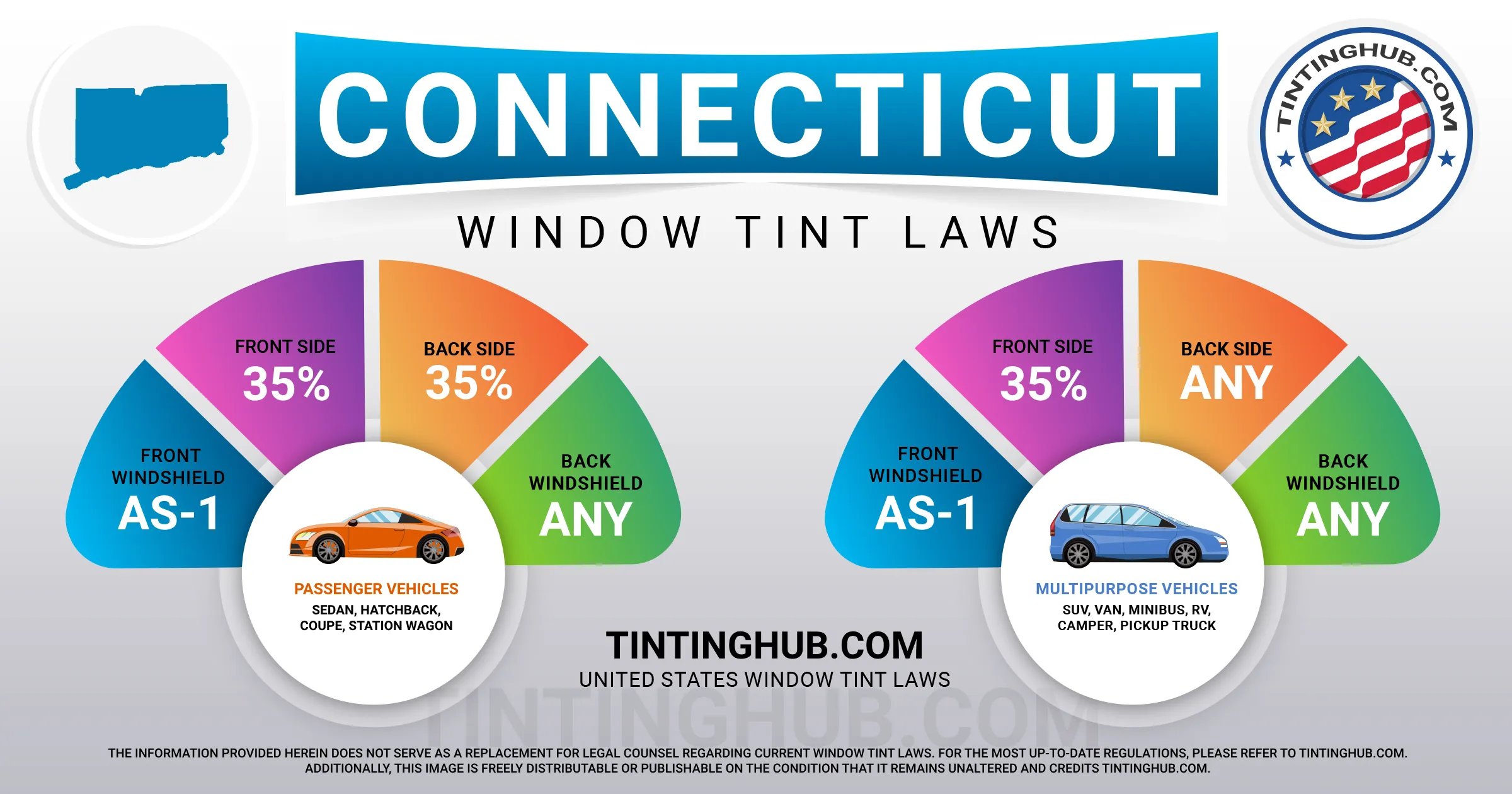When it comes to car window tinting in Connecticut, it’s important to stay informed about the regulations and guidelines set by the state. These laws were initially enacted in 1994, and since then, they have been tailored to ensure the safety and well-being of all drivers on the road. In this guide, we will provide you with detailed information about Connecticut’s car window tinting laws, including tint darkness, reflection, and other essential rules you need to know.

Understanding Window Tint Darkness
In Connecticut, the darkness of your car’s window tint is measured by its VLT, or Visible Light Transmission. The percentage of light allowed through your film and glass varies between sedan cars and SUVs/vans.
Tint Darkness for Sedans
- Windshield: Non-reflective tint is allowed above the manufacturer’s AS-1 line.
- Front Side Windows: Must allow more than 35% of light in.
- Back Side Windows: Must allow more than 35% of light in.
- Rear Window: Any level of darkness can be used.
Tint Darkness for SUVs and Vans
- Windshield: Non-reflective tint is allowed above the manufacturer’s AS-1 line.
- Front Side Windows: Must allow more than 35% of light in.
- Back Side Windows: Any level of darkness can be used.
- Rear Window: Any level of darkness can be used.
Window Tint Reflection in Connecticut
Window tint serves not only to reduce glare but also to reflect incoming light. Connecticut law permits a specific level of window reflection when using tint.
Tint Reflection for Sedans
- Front Side Windows: Must not be more than 21% reflective.
- Back Side Windows: Must not be more than 27% reflective.
Tint Reflection for SUVs and Vans
- Front Side Windows: Must not be more than 21% reflective.
- Back Side Windows: Must not be more than 27% reflective.
Other Important Connecticut Window Tint Rules
Apart from darkness and reflection, Connecticut has several other essential rules and regulations regarding window tinting:
- Side Mirrors: If the rear window is tinted, dual side mirrors are required.
- Restricted Colors: Connecticut does not explicitly prohibit any window tint colors.
- Tint Variance: State laws allow a 3% light transmission tolerance.
- Certificates: Film manufacturers must certify the film they sell in Connecticut. Ensure your dealer uses certified film.
- Stickers: An identification sticker for legal tinting is required between the film and glass on each tinted window.
- Medical Exceptions: Connecticut law allows medical exemptions for up to 20% VLT tint film.
It’s essential to keep in mind that interpretations of Connecticut’s tinting laws and regulations may vary depending on your county or place of residence. Therefore, we recommend double-checking the information with your local DMV or law enforcement authorities to ensure compliance.
Please note that our information about window tint laws in Connecticut was last updated in 2023. If you find any outdated or incorrect information in our guide, please don’t hesitate to contact us. We are dedicated to providing accurate and up-to-date information about window tinting laws in Connecticut and are committed to being a trusted industry leader in this field.